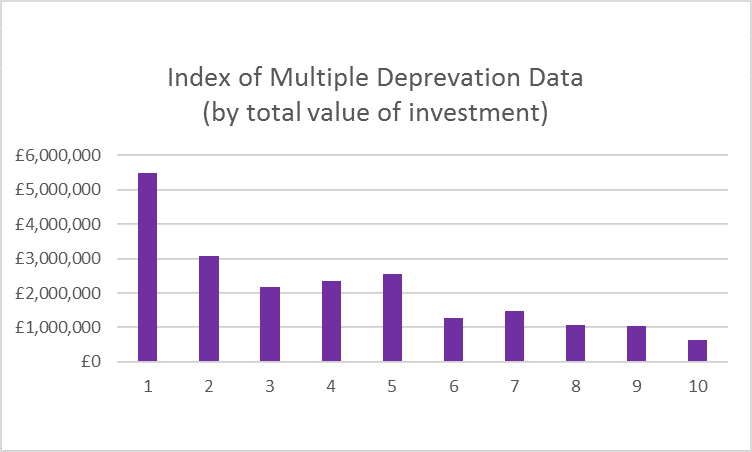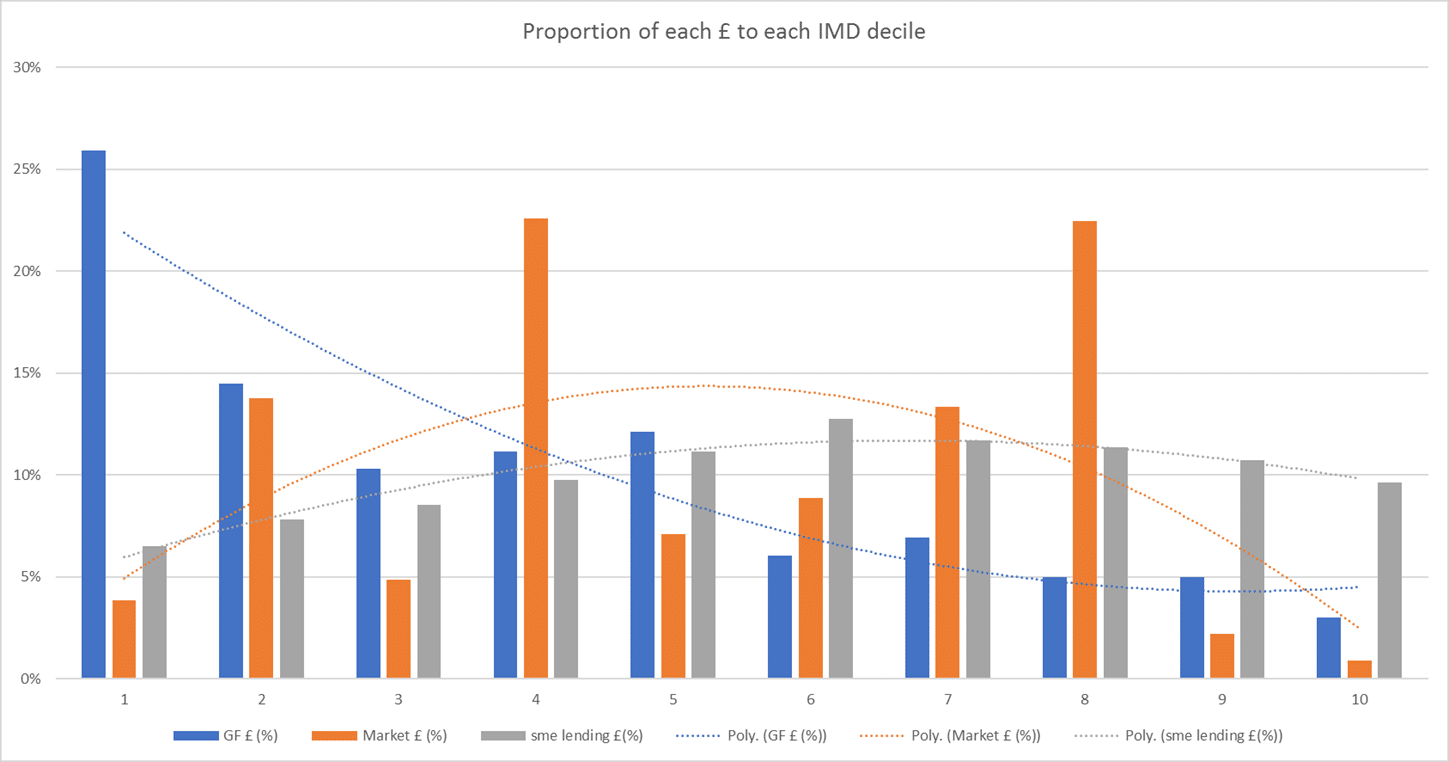Keen followers of our dashboard will have noticed that the last one we published covering July-September 2019 had a new chart. This graph shows how much Growth Fund money has gone into places of differing degrees of deprivation. It is worthy of a more in-depth look.
We have used the index of multiple deprivation (IMD) to assess the relative deprivation of places where the charities and social enterprises which have taken on investment from the Growth Fund are based. The index ranks over 32,000 places in England from least to most deprived by measuring a range of indicators. The places, also called lower-layer super output areas, have an average population of 1,500.
To make sense of this huge list of places we break the index into ten even parts, also from most to least deprived. We then map the postcode of the organisation who has borrowed money from the Growth Fund and identify in which of these deciles they lie. Decile 1 contains the most deprived 10% of places, decile 2 contains the second most deprived 10% and so on. Decile 10 contains the least deprived 10%.
We can show where Growth Fund investment have gone by the number of investments or by the total value of those investments. The two methods show broadly the same pattern of distribution against the deciles of the IMD.
This suggests that the Growth Fund investment is heavily concentrated in more deprived places, but how does it compare with other sources of investment?
The Big Society Capital deal level data can give us a picture of the rest of the social investment market (Growth Fund deals have been omitted from the data on the rest of the market).
When viewed by the proportion of all deals in each IMD decile we can see that the Growth Fund (blue) is much more heavily weighted towards investing in organisations based in the most deprived communities than the rest of the social investment market (orange).
There are caveats here of course.
One is that the postcode of the office of the borrower doesn’t necessarily correlate to where they are delivering their work. For Growth Fund borrowers this is more likely to be the case because they tend to be smaller organisations working within one community.
When you look at the data by total value of investment (below) rather than by number of details the impact on this trend is augmented. For example the spike in IMD decile 8 is influenced by the postcode of St Mungo’s head office and they are listed as a beneficiary organisation in this dataset for a number of the homelessness property funds run by Resonance, even though this will not be where the impact is being delivered.
This diagram also shows SME bank lending (in grey), which overall presents a more flat line across all the deciles although with a trend away from the most deprived areas. We have worked with our learning partners, the TI Group, to develop a proxy for this as the data is not available to same level of detail. The details of SME bank lending come from UK Finance. This is by postcode sector and not full postcode (postcode sector is the first digit of the second part of the postcode, e.g. for EC4A 1AZ you only have EC4A 1). There are c. 200 postcodes in each postcode sector.
What we have therefore had to do is look up the IMD deciles of each full postcode in each postcode sector, and assume that the bank lending in that postcode sector is evenly distributed across all postcodes in that sector. Therefore what we can say is less SME bank lending is going to postcode sectors with higher numbers of deprived areas in them and that higher levels of SME bank lending to postcode sectors with proportionally fewer deprived areas in them. We think that the assumptions we have made are likely to be generous here and it is more likely that SME bank lending is more skewed to less deprived places than the graph shows, but the data is not readily available.
So while taking due care of these caveats, it is clear that the blended model of social investment used by the Growth Fund is helping to drive its capital into the most deprived places to a greater extent than other initiatives.














